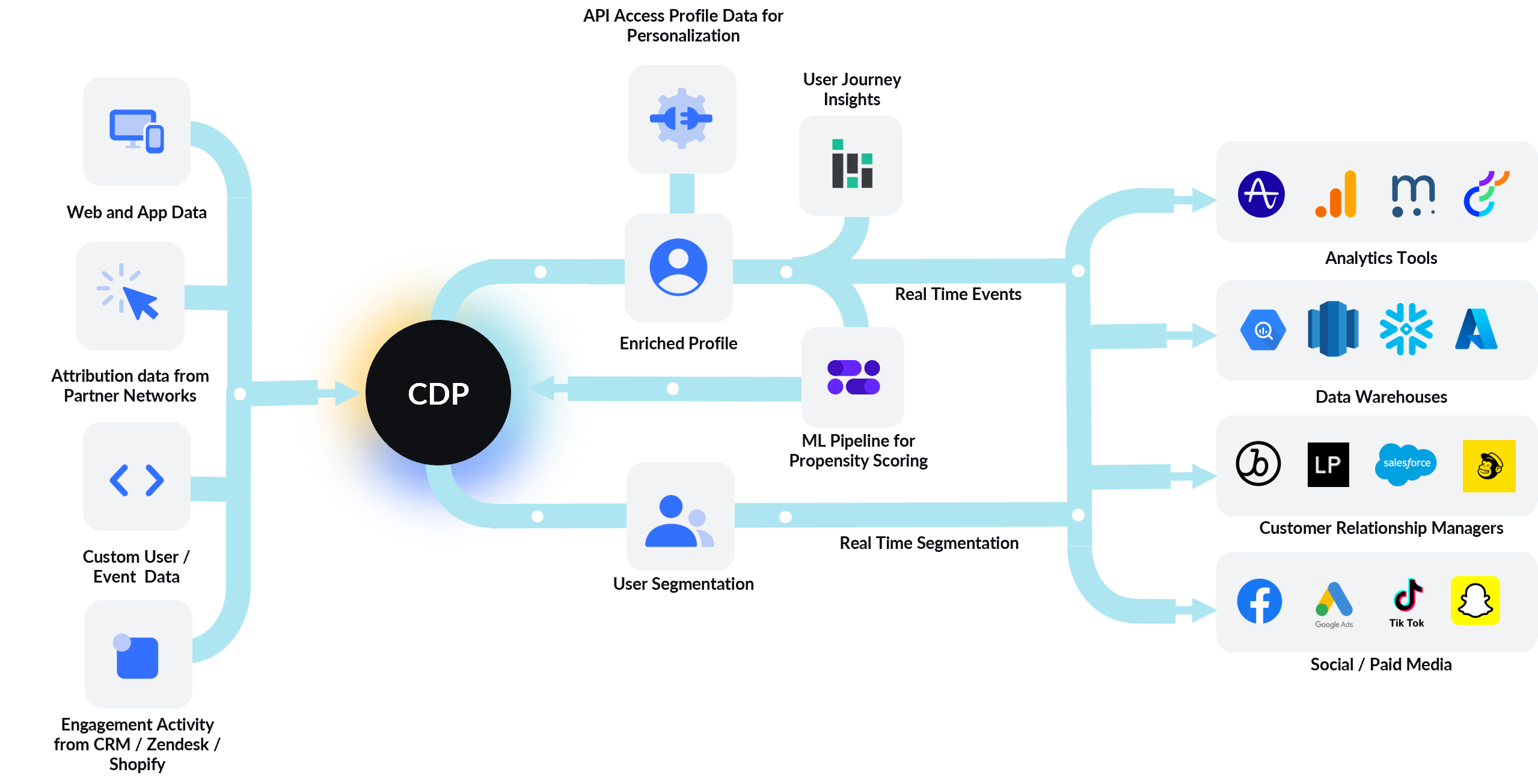We spoke with Chee Chew, Chief Product Officer at mParticle, about the challenges of extracting value from customer data. Chee shared his perspectives on customer data and best practices for businesses hoping to leverage this asset to improve their products and customer experience, all while protecting customer privacy.
Why is customer data so important to B2C businesses?
Consumer businesses are increasingly realizing that personalized customer experiences are a strategic differentiator. Not only does it build a great customer experience and loyalty, but personalization has long been the key to efficient and effective marketing and customer acquisition. Companies today are capturing more consumer data than ever – and if they can figure out how to leverage it effectively, the insights are powerful. I’ve seen good use of data transform thousands of businesses. I’ve seen bad use of data break customer trust and damage brands. That’s why we’ll continue to see investment in this area, despite its challenges.
What kind of challenges are you referencing?
The quantity of consumer data available to businesses presents both opportunities and obstacles. Consumer data is captured in repositories scattered all around the company, in different schema, sometimes conflicting, and often subject to government privacy regulations. The challenge for businesses is unifying the data, reconciling it, analyzing it then activating it in consumer engagement tools. Without the right resources and infrastructure in place, it’s really challenging for businesses to get a complete and accurate view of customer behaviour and leverage that to optimize commercial decisions.
When mParticle started in 2013, this is the gap we wanted to fill. We saw the opportunity for businesses to provide great personalized customer experiences if they could activate all the consumer data they actually had all around the company. We built tools to help businesses understand their consumer data – and, ultimately, to leverage it in service of their business objectives and their customers.
As businesses collect more and more consumer data, are we seeing customers’ attitudes toward data collection change?
Over the past few years, we’ve seen a few high-profile breaches of consumer data, and they’ve definitely impacted customer privacy concerns. Generally, though, I think businesses' and customers’ attitudes toward data collection are highly aligned. Consumers are increasingly expecting individualized service and are more willing than ever to have recognized user accounts. The requirement is that businesses must treat the consumer data with the respect that consumers deserve and provide real value to the customer in exchange.
And how can businesses create that value?
Well, customers don’t want businesses collecting their data, only to serve them more irrelevant online ads and for customer services to treat them like strangers. They want experiences to be individually relevant. If their data enables an experience they value, they’re willing to share it.
Today, there’s no reason businesses can’t leverage data to create engaging and personalized digital experiences for their customers, all while protecting their privacy and lowering their cost of acquisition. And that’s where you see consumer and business interests really align.
What are some of the roadblocks modern B2C businesses face, as they try to improve their customer experience without compromising privacy?
It’s interesting, the same issues that stop businesses from effectively leveraging data also leave businesses vulnerable to customer privacy breaches. When we work with businesses, we often initially find their data siloed, inconsistent and a bit chaotic. Different departments will have their own data analytics teams, operating by different procedures and standards, and working with subsets of data - not the most appropriate subset to their use case, but the subset they happen to have easiest access to.
These internal silos create a couple issues. First, they slow down the data teams - instead of analyzing data, data teams spend their time securing access to data and cleaning the data. Second, the conclusions they draw from data are suboptimal if the data isn’t complete and clean. Garbage in, garbage out is real. And finally, if the data governance is not strong enough, they risk undermining customer privacy protection and the resulting brand damage from breaking customer trust.
Are there good solutions available to businesses hoping to safely integrate these teams and processes?
Definitely. With the right CDP infrastructure – one that offers ‘out-of-the-box’ integrations, data quality tools and centralized governance – businesses can break these silos down, provide full 360 customer profiles to all corners of the company, while maintaining a strong governance model that they can trust.
The truth is, though, integration, data quality tools and centralized governance is just the start. What sets the best-in-class CDPs apart is their personalization capabilities.
At mParticle, we’re enriching traditional demographic data with more advanced analytics and personalization techniques. We enrich 360 customer profiles with predictive and prescriptive analytics to optimize omnichannel customer experiences.These are the capabilities that create real value in today’s e-commerce landscape.
Can you speak to the specific strategies or solutions you’re employing to help businesses create personalization?
I’m excited about the advances we’ve made in this space, especially on the fronts of (1) enabling real-time personalization, (2) behavioral personalization, and (3) ML base intelligent attributes.
Let’s start with real-time personalization: why is that important?
Imagine I’m an e-commerce customer, and I start a shopping session with two purposes. First, I’m buying a gift for my little cousin, a seven-year-old boy. After picking something out for him, I decide to buy something for myself, a fully grown adult. But a significant part of what’s relevant to the consumer is what they’re doing right at that moment. What mood are they in, who are they shopping for, etc. That level of personalization is lost if you only go by demographic data, or if your systems are batch processed. Think about how your preferences for things like movies, music, or food vary depending on your current mood. With real-time personalization, businesses adapt their products and CX in real time, interpreting customers’ behavior without any delays. This is what separates the leaders in the space from everyone else.
How does behavior-based personalization fit into the equation?
Historically, personalization has centered on traditional demographic data: things like age, gender, household income. This wasn’t personalization based on customer behavior so much as it was personalization based on customer demographics.
Today, businesses have so much data at their disposal that they should really be adapting their products and CX to customers’ real behavioral tendencies. Regardless of what my age actually is, what age am I behaving mostly like? In my experience in performance marketing, the behavioral demographic provides significantly higher relevance than traditional demographic data.
And the third category, Intelligent Attributes?
We’ve turned ML based predictive and prescriptive information about each customer into profile attributes that enrich each customer record and automatically enhance consumer data in downstream engagement tools. Our approach enhances existing tools with ML capabilities without the need for additional engineering resources. We enrich profiles with ML predictions such as the customer’s propensity to take a high value action (e.g. re-purchase, be cross-sold), as well as prescriptive recommendations on what company actions will most impact that propensity.
We do this determination for each individual. This level of personalization can’t be achieved through old-school heuristics. You need a CDP with real machine learning capabilities. Most businesses aren’t taking advantage of these capabilities, and it’s a real missed opportunity for them.
Given all the new developments in this space, what does the next wave of innovation at mParticle look like, heading into 2023 and beyond?
In the past, mParticle has provided analytics and advising services to businesses, consulting with different departments around specific business objectives and customer needs. This process is valuable – and it’s not going anywhere – but we’re always looking to create new cost and time efficiencies for our clients, and that’s led us toward automation.
Pretty soon, given a business objective, our systems will make and execute personalization decisions for businesses automatically. With data, a goal, and some basic building blocks, our infrastructure can build optimized customer journeys and personalized digital experiences, across all platforms and channels.
With strong auditing and measurement capabilities, we can give businesses a lot of confidence in these programs’ results. This tilt toward automation is producing unbelievable outcomes for our clients and their customers.










